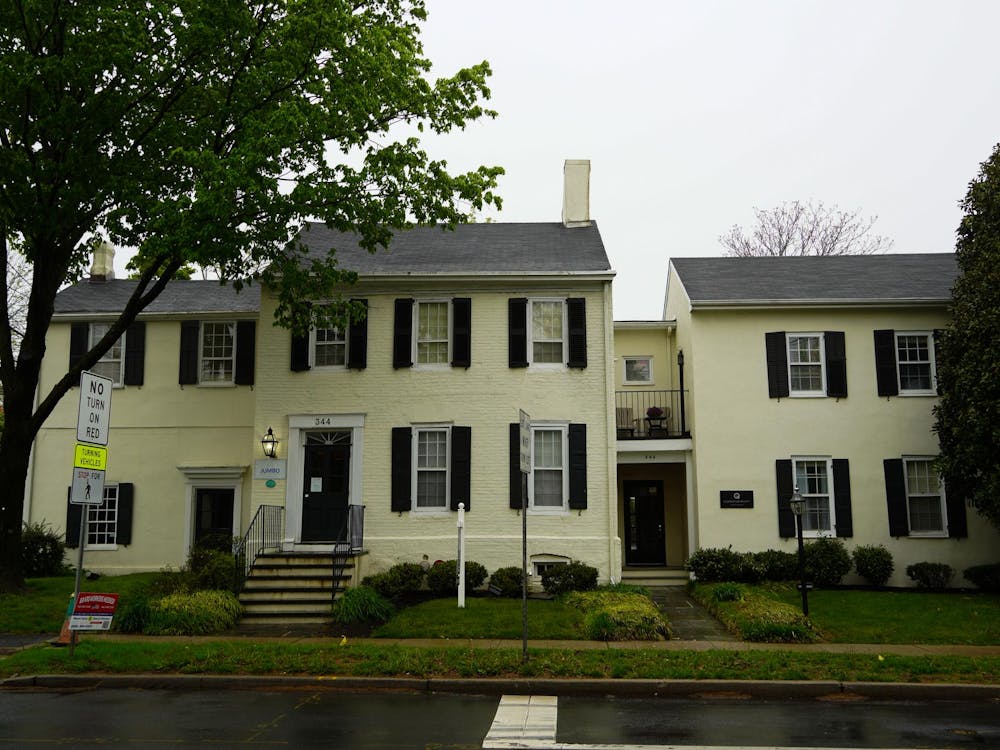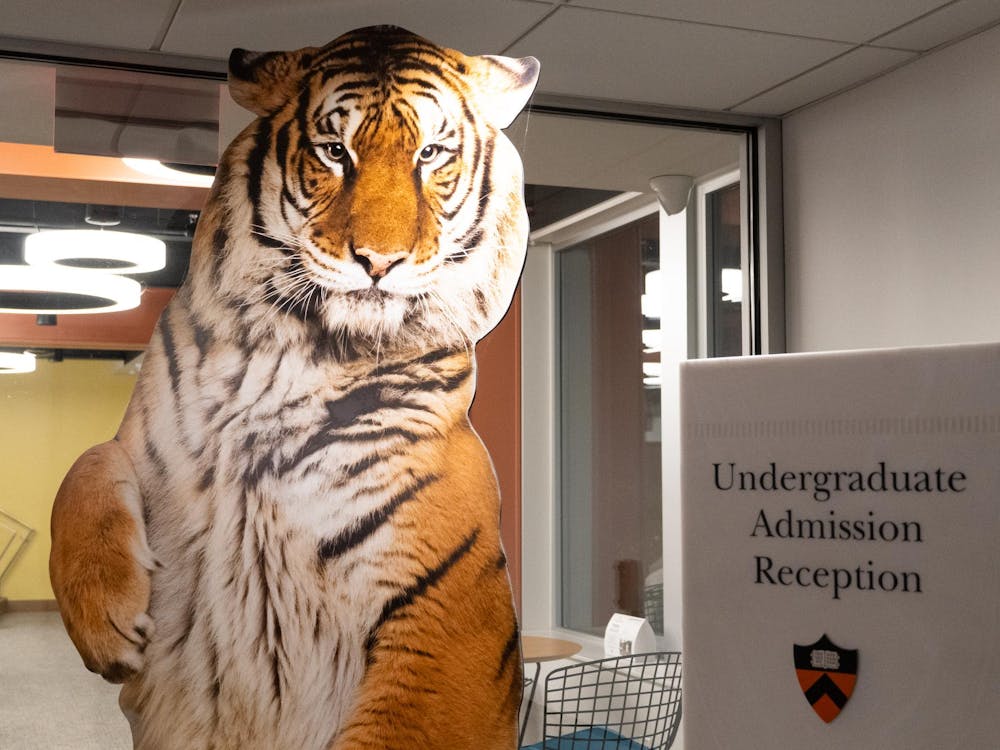A panel regarding socioeconomic diversity ended in a heated question and answer session between students and panelists on Tuesday evening.
The panel — titled “What Kind of Diversity: Is Princeton Too Narrowly Focused on Race and Ethnicity Rather Than Economic Diversity?” and moderated by professor Peter Singer — included a protest by a group of students who said they criticized the way the panel discussion had been framed.
The students, mostly dressed in black, waved a handout with a blue Post-it note attached to it whenever a panelist said something they disagreed with. The first demonstration happened around half an hour after the discussion started.
“The racial diversity we have in this country is bad diversity and let me explain why,” Russell Nieli GS ’79,James Madison Program senior preceptor, said, after which the students silently raised their colored handouts.
Nieli then said that he had 12 reasons to give but that he didn't have enough time to explain them. Each panelist was given 10 minutes to present.
Most of the questions during the question and answer period were directed at him. One member of the audience said Nieli was “extraordinarily accommodating of racism,” adding that “[his] evasion of race seems to be a big problem.” He questioned the “essentialism” in Nieli’s statement that certain cultures, such as Asian cultures, are trained for academic success.
“Racial preference policy has served to polarize racial attitudes," Nieli said. “We should focus on the truly disadvantaged and not on the race itself.”
The other panelists were University President Christopher Eisgruber ’83, dean of the Wilson School Cecilia Rouse and sociologist Alexandria Walton Radford GS ’09.
Earlier, Singer had opened the discussion by asking whether the University should do more to increase socioeconomic diversity on campus and alongside its peer institutions.
Eisgruber cited The New York Times College Access rankings, which ranks Princeton 34th in socioeconomic diversity. However, he explained that the data for the rankings is outdated and that the Class of 2018 is the most socioeconomically diverse class in the University’s history.
“My conviction to care about socioeconomic diversity does not make me less concerned about the other types of diversity,” Eisgruber said.
Radford continued the discussion by presenting research published in her book “Top Student, Top School?”, in which she argues that social class negatively affects even public high school valedictorians when they go to college. Radford noted that 80 percent of high-income students apply to elite institutions, while only 50 percent of equivalent low-income students do.

In contrast, Nieli said that positions in elite institutions, or students admitted, should be picked solely based on talent and abilities.
“I believe in a strict meritocracy,” Nieli said. He noted the California Institute of Technology as the prime example of successful meritocratic-style admissions, producing 33 Nobel laureates.
“Academic merit should be the main criteria,” he said.“Race and preference policies are bad diversities.” This remark prompted the protesting students to raise their handouts. He said these policies continue to perpetuate negative stigmas and stereotypes such as the “dumb jock” stereotype and promote the mindset that one group is superior to another.
Rouse's presentation echoed points made by Eisgruber. She said that all kinds of diversity are good for any institution, including the University. While an increased focus on the socioeconomic background of students is very important, it is not the same as focusing on race or ethnicity, and institutions such as the University still need to focus on diversity by race or ethnicity.
“Many of the measures of merit are rather imperfect,” Rouse said. “I think diversity is good."
Members of the audience responded by snapping their fingers, a form of quiet applause.
At the very end of the question and answer period, industrial relations librarian Linda Oppenheim said she has seen diversity increase throughout her time on campus, but that this is not enough and that African-Americans still face discrimination every day.
“My children, who identify as African-American, said that what looks diverse to me as a white person is not necessarily diverse,” she said, prompting applause from the audience. “My question is how do people feel once they are here? Do they feel supported? Do they feel comfortable enough to express their full identity — all of their identities. ...And if this university does not educate white students about their white privilege and they go out into the world ... as ignorant of their white privilege as they came in, then the Princeton education has failed them.”
“I take that as a challenge to the University as a whole,” Singer said in response.
The lecture was part of the University Center for Human Values' General Public Lectures series cosponsored by the Wilson School. It was held in McCosh 50 at 7:30 p.m on Tuesday.







